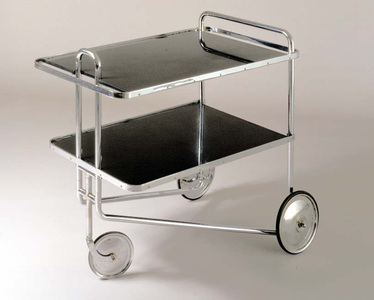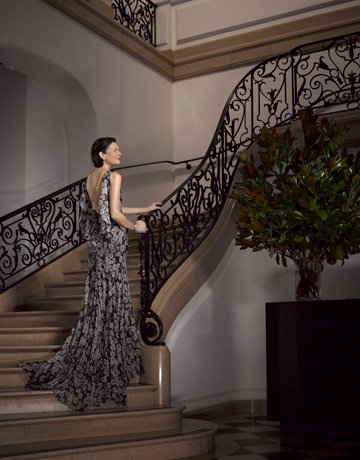The Neue Galerie // A NYC Gem
An afternoon spent walking through the collections at the Neue Galerie was a real treat, a glimpse into another era. My daughter Alexis and I had a few hours recently and chose the small collection of Austrian And German Expressionist art in the beautifully restored Beaux Arts mansion just off Fifth Avenue's Museum Mile.
 The museum showcases early twentieth-century German and Austrian art and design. The collection reflects the intersection of various creative disciplines at the turn of the century, the "New Art", (source of the museum's name) of this period was represented throughout Europe to capture the innovative and modern spirit that was emerging. Examples from these early days of modern design; in the decorative arts, painting, sculpture, furniture, lighting and the very new field of photography are all represented in this thoughtfully edited collection and inspired design and book stores within the museum. The collection has work from the fine artists from Vienna, including Gustav Klimt and Egon Schiele.
The museum showcases early twentieth-century German and Austrian art and design. The collection reflects the intersection of various creative disciplines at the turn of the century, the "New Art", (source of the museum's name) of this period was represented throughout Europe to capture the innovative and modern spirit that was emerging. Examples from these early days of modern design; in the decorative arts, painting, sculpture, furniture, lighting and the very new field of photography are all represented in this thoughtfully edited collection and inspired design and book stores within the museum. The collection has work from the fine artists from Vienna, including Gustav Klimt and Egon Schiele.
and the decorative art of early modernists, such as Wiener Werkstatte and Josef Hoffman.
In the early 1900's in Germany, the Bauhaus movement was growing and included artists like Wassily Kandily and Paul Klee and Ludwig Mies van der Rohe and Marcel Breuer. I have Breuer kitchen chairs based on the same tubular steel design of this bar cart and lounge.
The Neue Galerie grew out of the passions of two men who collected Modern German and Austrian art and design. Leonard Lauder, a businessman, philanthropist and art collector and Serge Sabarsky, an art dealer and museum exhibition organizer. In 1996, after Sabarsky's death, Lauder began to create the Neue Galerie, to realize their shared vision of opening a museum for their respective collections. He bought the former William Starr Miller House, on the corner of Fifth Ave and 86 St. Seldorf Architects renovated the mansion to appropriately display their artworks.
In 2006, Lauder purchased Gustav Klimt's 1907 gold-drenched Portrait of Adele Bloch-Bauer l for a record price (at the time of $135 million). The painting is in the main floor gallery, it is really wonderful, and worth the visit to the museum.
Cafe Sabarsky, the intimate restaurant in the museum was designed to replicate the Viennese cafes at the turn of the century. The furnishings are correct for the period, light fixtures are by Josef Hoffman, furniture by Adolf Loos and the banquettes in a 1912 fabric by Otto Wagner. I began by saying the museum and cafe are a treat, a quiet and lovely space. We didn't eat here that day, but will plan to on our next visit. The museum and cafe are beautifully done, a wonderful break from the usual NY pace, an environment to feel immersed in the period it represents.
We saw the current exhibit of Ferdinand Hodler's paintings. Hodler is considered the most influential Swiss artist of the period. His landscapes are beautifully executed, and I loved how their rich colors looked on the vibrant blue walls in two of the gallery rooms.
Color was a key component to his work in his female figures - particularly blues and reds.
The museum website has photos from a number of magazine layouts that were recently photographed at the museum. How apt that the elegant setting was used as a background for fashion and style in the 21st century. Diana Taylor, "New York's First Lady", in Harper's Bazaar, 2011, in patterned black and white, echoing the stunning grand staircase.
and from Quest Magazine, patterns and colors reflecting the detailed Klimt painting
To view the collection and the current exhibit, (Ferdinand Hodler: View to Infinity, is through January 7th) only takes a short time. Both the museum space and exhibitions provide a glimpse into a period in history that informed a lot of change in the creative arts and influenced a great deal of modern art and design.













